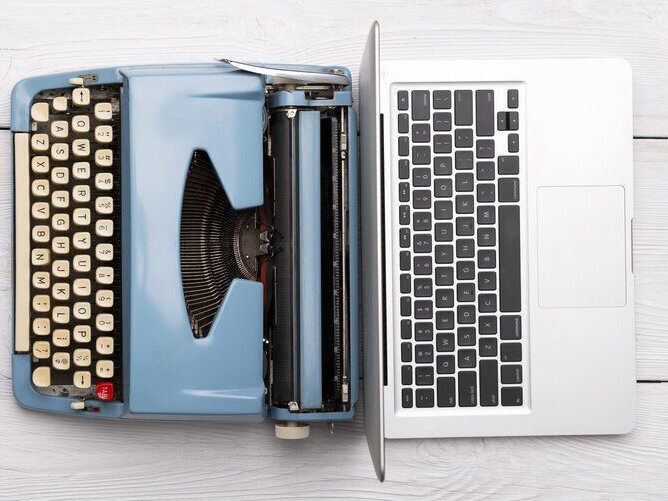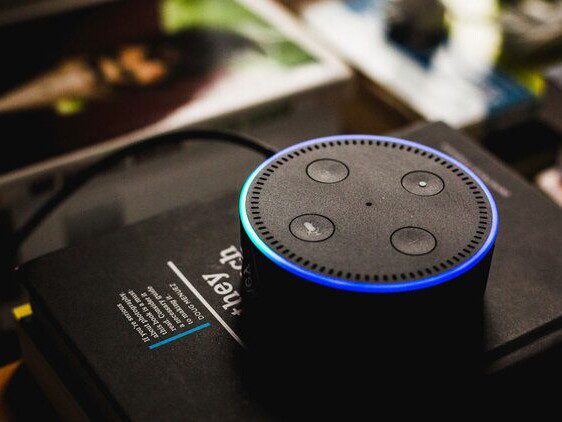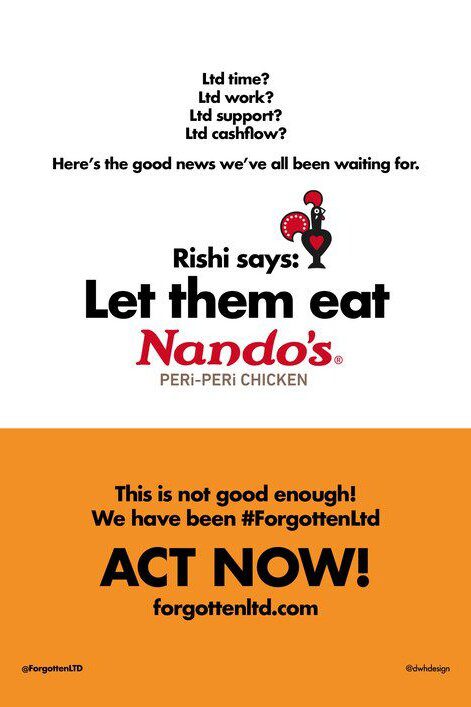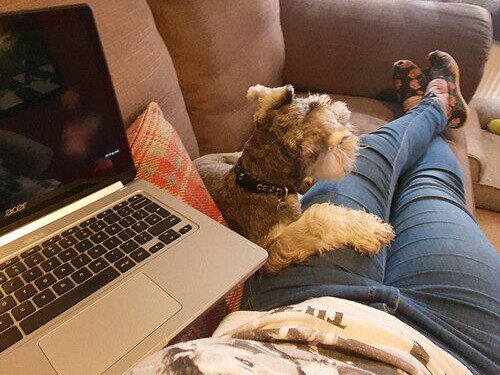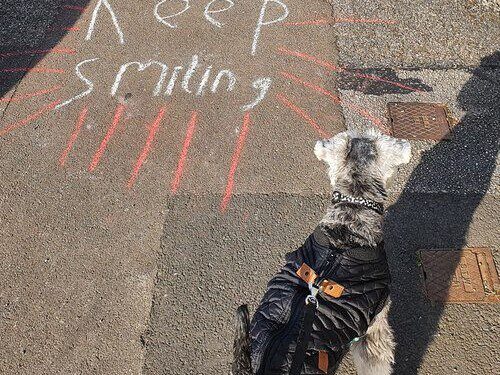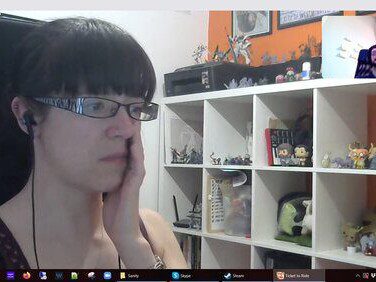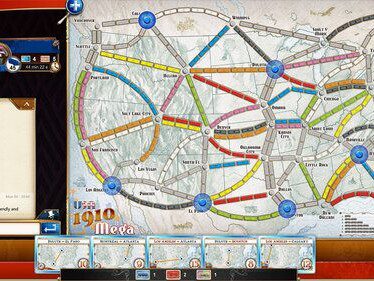The new normal of advertising
2020 has brought lots of unexpected changes to the way we live our lives, some of which may be around for the foreseeable future. One of the trends we’ve seen in advertising lately is embracing ‘the new normal’.
As much as it might be nice to forget about the pandemic and pretend that everything is normal (the old normal?), the truth is that we’re all in this together. This is a message that has been embraced by many brands throughout 2020, and we’ve seen some creative and unique advertising campaigns this year.
B&Q: Build a Life
This emotional advert by Uncommon London features real home videos from 69 families across the UK filmed over the decades.
DIY and decorating have been hugely popular pastimes during lockdown, with spending more time at home sparking people to make a few home improvements. However, instead of focusing on how a coat of paint and a new bathroom suite can transform a home, the advert emphasises the memories that are made there.
The line “You don’t buy a life; you build one” serves as a reminder that our homes are at the very heart of our lives, and that we’ve still got plenty of memories left to make.
John Lewis: For the Joy of Home
A playful offering set to the soundtrack from The Muppets, John Lewis brings us a charming insight into a family’s lockdown life.
With family members working and studying from home, the youngsters seem like they’re up to no good, surreptitiously moving furniture around and pulling down the curtains. The parents among you likely felt that knotting dread, but it’s revealed that they’ve been creating a stage to perform a show for their parents.
With the tagline “For the joy of home”, the advert does a great job of emphasising the family fun and creativity that can be found in amongst the chaos of the pandemic.
Portal from Facebook: Feel there
If you can’t be there, feel there. That’s the message shared by Portal, Facebook’s video calling hub.
The advert reminds us that even though we are apart, we can still share our lives with each other. From celebrating birthdays to sharing recipes and keeping up with our regular fitness regimes, the power of video calling enables us to keep going.
Finishing with the statement that “when this is all over, we’ll be closer than ever”, this ad tugs at the heartstrings. It makes you want to make sure that you don’t miss out on all those wonderful memories.
Maltesers: Isolation Life
Maltesers released a series of Isolation Life adverts, featuring four women video chatting while navigating the complexities of life in lockdown.
From video dating to clapping for carers and trying to steal a few quiet moments away from the kids, these newly familiar moments brought a little light-hearted humour.
The final message “We’ll get through this” at the end of each advert reminds us how important the little things like chatting to friends and indulging in a bit of chocolate can be to staying sane in difficult times.
Embracing the new normal build connections
Customers often need to connect with a brand on a practical or emotional level in order to take action and make a purchase. By resonating with a brand, a person is more likely to trust them and understand the benefit of their offering.
Marketing uses these connections to show a person how a product or service can make a difference to their lives. This most often comes in the form of pain points, in which a brand shows a customer how they can solve a problem that they have, and emotional bonds, in which a brand builds a sense of community and shared experience with the customer.
By embracing the new normal, brands are able to speak to their customers on a personal level. They are acknowledging the existence of these changes, struggles and new challenges, and showing customers that they are considering the current state of the world in their approach.
How sustainable is the Internet of Things?
We all love the internet. We probably wouldn’t know what to do with ourselves without it—and some of us would be out of a job entirely! But how does our reliance on the world wide web affect the environment, and is it sustainable in its current form? Claire Baldwin investigates.
“But the internet is a digital space! How does it affect the environment?” you may ask. Okay, so the actual internet itself isn’t the issue, so much as the so-called Internet of Things (or IoT).
This refers to all those devices that we actually use in order to access the internet. That’s smartphones, routers, credit card readers, 5G masts; basically any device or piece of tech that is able to gather data and share it with other devices. Without the IOT, the internet is pretty useless. It’s this hardware that’s causing concern.
While the continuing developments in the world of tech are extremely exciting, this fast pace of innovation means that each device has a very short shelf life.
Is our tech born to die?
Consumers have been conditioned to crave the latest model, annually replacing perfectly functional iPhones simply because they are perceived to be out of date. By harnessing the power of trends and the desire for the latest tech, manufacturers are able to sell more items simply because people want them.
Not only that, but manufacturers even sometimes design devices not to last. This is known as planned obsolescence. There are a couple of things at play here. First of all, it’s not really in a company’s interest to sell you a single product that will last you a lifetime when they can turn you into a repeat customer.
Secondly, as new technology is constantly being developed, what was once top-of-the-line quickly becomes dated. Designing devices to fail after a certain amount of time gives manufacturers a way to ensure that people are always using the latest models, improving brand perception.
Necessity is the mother of invention
Technological advancements have led to huge steps forward in everything from medicine to road safety. Where there is a need for a solution, tech companies have stepped in, providing gadgets that are better, more efficient, cheaper and smaller than their predecessors. But by developing tech to solve our problems, we’ve unknowingly created a whole new set of problems.
Wherever possible, we should continue to develop new and better ways to save lives and improve the world we live in, but manufacturers need to weigh up the environmental cost of the ever-changing IoT. Companies should implement robust tech recycling schemes, repair usable devices instead of replacing them, and develop tech solutions that are more durable and more sustainable.

Doing our part
At DWH, we’ve made it our mission to do as much as we can to offset the negative impact of our reliance on the IoT.
Earlier this year, we joined Ecologi (formerly known as Offset Earth), which helped us to become a climate positive workforce through reforestation. You might have read about it on our blog already. In the last 9 months, we’ve planted 547 trees and helped to reduce carbon emissions by 31.49T. Check out our profile or sign up for a personal or business account if you’d like to help out.
We’re also part of Apple’s iPhone Upgrade Programme and use Apple Trade In, so any devices that we want to upgrade or no longer need can be resold or easily recycled to minimise waste.
We’re always looking for new ways to improve our sustainability as a business, so let us know if there are any other schemes that you think we should get involved in!
How has the pandemic changed perceptions of creatives working from home
In light of the pandemic, Claire Baldwin takes a look at how our perceptions of home working have changed, and whether this will change the future of the creative industry.
With 20 million British workers having made the switch to home working thanks to the pandemic, home working has become a hugely popular subject in just about every industry.
But how have the last few months changed our impression of working from home? And, as members of the creative industry, what does this mean for the future?
Perception: Creatives can’t work remotely
It’s true that there are some jobs that cannot be done remotely. There are also many jobs that are perfectly well suited to home working, and the creative industry is full of them.
It’s 2020 (in case you hadn’t noticed). A huge amount of what we do is online or in digital formats. As long as everyone involved with a project has access to a computer and the internet, there’s actually very little reason to all get together in the same room. Us creatives have been using Skype, Zoom, Slack and Trello to communicate with colleagues and track projects since long before the pandemic. Trust me; we’ve got this.
Perception: Creatives will get distracted at home
Actually, a lot of us creative types find the hustle and bustle of office life to be a huge distraction.
While it’s great to catch up with friends and enjoy a little human company, there are also many things in the workplace that are simply an annoyance. Sometimes, we just need a little peace and quiet. Trying to come up with a snappy tagline while someone is regaling the office with tales from their trip to the South of France is all but impossible.
Perception: Creatives are lazy and unmotivated
We’re a pretty dedicated and passionate bunch. If you know a creative, you can all but guarantee that they do what they do because they love it.
Taking that passion and turning it into a career takes discipline. Sure, we can run into a little creative block from time to time, but it’s our love of the craft that keeps us going. We’re the people who are up at three in the morning sketching out ideas because it’s the only way to get it out of our brains. You usually can’t stop a creative from creating.
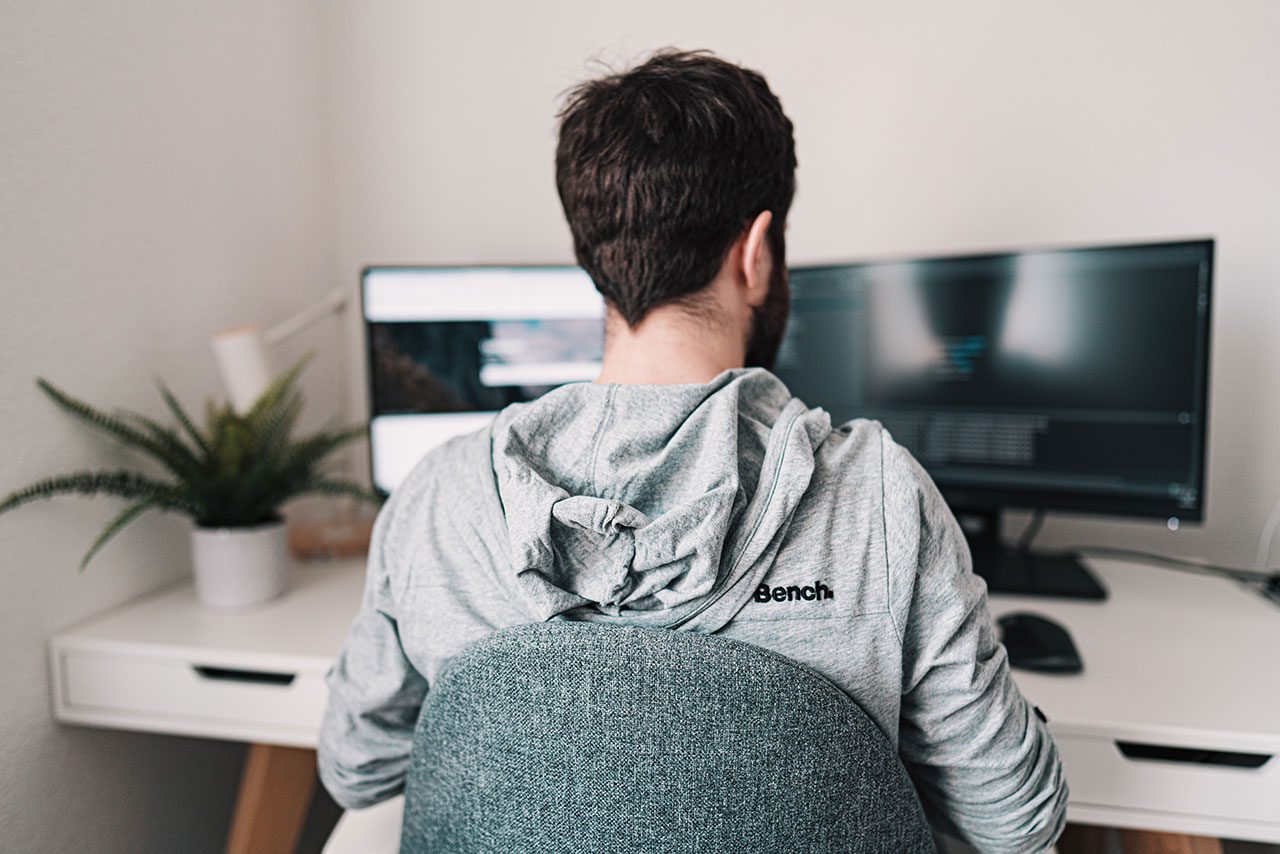
Home working and the creative industry
While some companies have been reluctant in the past to allow it, the unexpected shift to remote working over the last few months has given employees a chance to prove themselves.
Employers have reported an increase in productivity in home workers compared to their office-based counterparts, while employees have saved time and money on commuting, spent more time with their families, and generally experienced less stress.
For creatives in particular, these benefits can have a hugely positive impact on their work, giving them the mental and physical freedom to work when inspiration hits—and to not get bogged down in meetings that could have been emails.
We believe that more and more companies in the creative industry will continue to embrace flexible working, and that they’ll see huge benefits in doing so. That’s not to say that the office is completely a thing of the past for creatives, but giving employees more freedom to choose when, where and how they work will yield happy, efficient employees—and satisfied customers.
Excluded during a time of crisis
The coronavirus pandemic has affected us all in some way, and while there have been various support schemes put in place by the UK government, many people and businesses have been left out. Claire Baldwin takes a look at who’s struggling and what you can do to help.
At least 3 million people have been left out of financial support during the coronavirus pandemic and are facing financial difficulties that are out of their control.
This means that some businesses may go under when they would have survived if they had given the same support that others received. Companies may also choose to take more risks both financially and in terms of the safety of their staff and customers in order to make ends meet.

What problems are small businesses facing right now?
Not being self-employed
While setting up your own business seems like the definition of being self-employed, this depends on the type of business that you run and your role within it.
Directors of limited companies are not classified as being self-employed. Therefore, those who have set up their own limited company and taken on the role of Director are not eligible for the government’s self-employment income support scheme, even if they are struggling to earn money due to the pandemic.
Not being established enough
The government’s self-employment income support scheme was only made available to those who have been self employed for at least three years.
This means that newer businesses are not eligible for support, despite being more likely to need support than established companies.
Not having commercial premises
A grant has been made available as a means to support small businesses, but this grant is tied to the use of commercial premises.
For many small businesses, freelancers and sole traders, it is not economical to pay for an office space, as simply covering these overheads requires a lot of income. Additionally, many businesses with commercial premises—particularly those who have had to furlough staff or let them go altogether—have had to give up their lease to make ends meet.
Not wanting to take on debt
The coronavirus Bounce Back Loan was recently introduced with the intent to lend money to small and medium-sized businesses.
During this uncertain economic landscape, many businesses owners are extremely wary of taking out loans and potentially increasing their debt. Owners will become liable for repayments on top of any other outstanding debt caused by difficulties caused by the pandemic, and there is no guarantee that business will pick up enough for them to get by.
Not wanting to furlough
While the furlough scheme has been able to support many employees in the UK, it’s not so easy for company directors and small businesses.
The unpredictable nature of self-employed income means that a person’s average salary may work out to be fairly low, so the 80% furlough pay won’t cover their current living costs.
Workers who have been furloughed are also not allowed to carry out work for the company, meaning they can’t work towards saving the business.
Who’s helping us?
#ForgottenLtd
The #ForgottenLtd Campaign exists to raise awareness of the lack of government support for the small business community across the UK.
Many small limited companies are not eligible for meaningful support, despite many having felt the effects of reduced trading more than their larger counterparts.
The campaign is not demanding charity or handouts; its key message is one of parity, urging the government to offer fair and equal support to businesses of all sizes.
ExcludedUK
ExcludedUK is a non-profit NGO serving as a platform for those entirely or largely excluded from the government’s COVID-19 financial support.
As well as raising awareness and campaigning for more support, ExcludedUK offers a community forum, business listings, and opportunities to offer support to others.
Many of us have felt isolated during the recent months of lockdown and uncertainty, and the organisation provides an important service, allowing those affected to feel included instead of excluded.
You!
Whether or not you’ve been excluded from financial support, you can get your voice heard and help the UK’s wonderful business community to survive.
If you’d like to help out, #ForgottenLtd has a list of ways that you can take action, such as sharing content on social media, signing petitions and writing to your MP. ExcludedUK also offers many methods of support, including signing their open letter.
If you have a few moments to spare, we (and the entire UK small business community) would be extremely grateful if you could take action to support us.

The prospects for the graduates of 2020
In case you hadn’t already noticed, 2020 has been a bit of a weird year. In particular, 2020 graduates are facing unprecedented challenges when it comes to entering the workforce now that their studies are complete. Claire Baldwin analyses the impact the pandemic has had on graduates and how we can support them through this uncertain period.
Having personally been thrown straight from university into the 2008 recession, I have a lot of sympathy for this year’s graduates, whose position is far from enviable. If you’re currently staring into the unknown and feeling overwhelmed about what fate might befall you, you might find comfort in the experiences of these creatives who survived the 2008 financial crash.
There are also many new schemes that have been created to support graduates, offering great prospects that will help them to move forward, while traditional methods have been updated to provide the best possible outcome for students in these unusual circumstances.
Birmingham Design BFFs scheme
BFF is a scheme that pairs industry professionals with graduates who would benefit from support and advice during this challenging time.
It’s an amazing opportunity for designers to give back to the creative community, and DWH’s own David Huskison has been paired with BCU student Eleanor Wells. Now in the final year of a Graphic Communication degree, Eleanor aspires to be the next Annie Atkins and start a career designing props for film and television.
For the next 12 months, Dave will be Eleanor’s mentor—and he has lots of useful insights to offer!
Coventry Degree Show 2020
Coventry University’s annual degree show celebrates the work of its graduating students. Due to the current health crisis, it’s unable to go ahead in its usual format and will instead be going virtual.
Student designers, artists, performers, photographers, filmmakers and writers will host a range of events and will share videos of themselves working on their final major projects. This immersive online experience will give lecturers and potential employers more insight than they’ve ever had before into the work that has gone into producing these final pieces.
As well as showcasing student work, the new-style degree show will also feature guest speakers and industry talks. There will even be an Industry Night for potential employers, helping these talented young creatives to take their first steps towards making their mark outside of education.
We could be seeing the beginning of a new era where virtual degree shows become standard practice. With BA students at Liverpool John Moores University hosting their degree show on Mars this year, we reckon it’s the perfect opportunity for students to really showcase their creative potential.
Coventry Artists
We got involved with the Coventry Artists’ final year project with photography student Radvile Malinovskaja, who came into the office and conducted a couple of interviews with us before taking some portrait shots in the office (back when we still had an office!).
We also contributed to this by submitting a self portrait for the final project book. This was supposed to be printed and given out at the degree show but was instead distributed as a PDF, as the show was unable to go ahead due to COVID-19.
Self portrait of our Creative Director as part of the Coventry Artists project
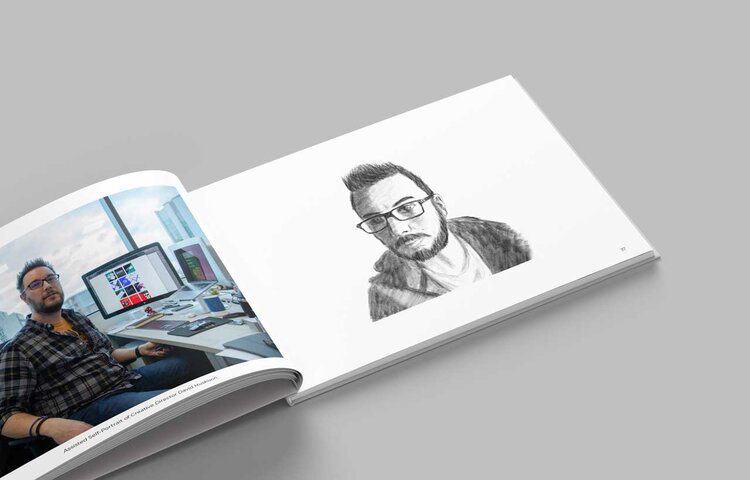
Supporting local creatives
We know how challenging the creative industry can be at the best of times, which is why we love supporting up-and-coming talents in the area. If you are a graduate or are still studying and have any questions about the industry, drop us a line and we’ll be happy to chat.
Life in Lockdown: Isolated but not alone
While we’re all working from home, it’s important to keep in touch with team members and make sure that everyone is safe and well. Let’s check in with DWH’s resident copywriter Claire Baldwin.
Well. The last two months have been … interesting, to say the least. I’m writing this during week 6 of the UK’s lockdown, though our household was already trying to isolate as much as possible for a week or two beforehand.
Things have been kind of tough, but my family and friends are all safe and healthy, and my partner Matt and I are both able to work, so we’re very fortunate. My heart goes out to everyone who’s been affected by this awful situation, and I’m so grateful to those who are putting themselves at risk on a daily basis to keep us all safe and fed.
The effect of lockdown on different industries
As a freelancer, my income is never guaranteed. While I had managed to build up a good amount of regular monthly work, and I was delighted at the end of my second tax year to have made a legitimate salary over the previous 12 months, coronavirus turned all of that on its head.
Almost overnight, I experienced around a 90% drop in my monthly income. I was freaking out. Several of our clients here at DWH are in industries that were massively affected by the lockdown, including the events and wedding industries, and, understandably, they were forced to suspend their marketing budget. One of my personal clients was also unable to work for around a month, having contracted COVID-19. I’m glad to say that he’s now just about fully recovered.
This meant that March 2020 was one of my quietest months since starting freelancing.
However, other industries have become much busier because of the pandemic, and in April I found myself absolutely flooded with work from industries such as professional cleaning and business management software.
In stark contrast to the incredibly gloomy March, April was one of my busiest months since starting freelancing!
Working from home
For me, working from home is my standard operating procedure, so that hasn’t changed things much for me. Matt (who works in engineering design) has been working from home since a week or so before the lockdown, so he’s taken over my office a little!
He has frequent virtual meetings and calls, so I have to remember not to scream-sing along to ‘80s music like I do normally. This also means that I sometimes have to take Wim, our one-year-old miniature schnauzer, out of the room when he’s barking or trying to pull the curtains down.
To be fair, Wim has been getting better at letting us get on with work over the last few weeks. He’s quite good at napping for an hour or two, but when he wants attention, you don’t really have a choice! Learning to push through the “I don’t feel like working right now” mood and crack on with work while he’s asleep is an essential skill!
Dog parenting during lockdown
Aside from working, looking after Wim is the other big task in my day. Being able to take him for a walk in the park every morning has definitely helped to keep me going. Not being allowed to go anywhere or do anything can get a little depressing, but we always have to get up in the morning to let him out and to take him for a walk, so he brings us a nice sense of purpose and routine.
Wim is devastated to not be able to go to his favourite pub right now, but he loves the park and being in the garden, so he’s making do. Opinions are somewhat mixed on whether dogs can catch or pass on COVID-19, and not all of the other dog owners are following the same guidelines. Some owners won’t touch other dogs and don’t want theirs to interact with any other people or dogs, whereas others are carrying on as normal, letting their dogs off the lead and stroking all the dogs.
Personally, I’m somewhere in between. I feel bad not letting Wim run off and enjoy himself with his friends, but I’m also wary of the risks. It’s hard to know what to do, and it’s not like I can explain what’s happening to him! I’m definitely more lenient with him than Matt is. He’s a bit of a mummy’s boy.
Skype is the MVP of lockdown
I’ve been video chatting every day for meetings, socialising, exercise, and catching up with family. Skype, Zoom, WhatsApp video, Discord, Google Hangouts, FaceTime … I’ve been using everything. Video calls make me feel like I’ve actually got company, and they have definitely helped to keep me sane.
In many ways, I’ve been spending more time with people during lockdown than before! I’ve also been keeping in regular contact with a few people that I hadn’t been speaking to much of late, and it’s been lovely.
My current schedule goes something like this: On Mondays, I play games with my brother on Steam, usually Ticket to Ride or Don’t Starve Together. On Tuesdays and Thursdays, I drink wine with my friend Isabelle and watch shows on Netflix. Wednesdays more freeform, like the time I had a Hangouts chat with my friend Ella and we chatted while drawing our pets, which was a lovely evening. Friday is another Netflix day, this time with my friend Dan, who I’ve not been able to speak to regularly in years and it’s been so wonderful to spend time with him.
I’ve also had virtual sessions with my personal trainer over Skype, which means trying to find things I can do in my kitchen with just a yoga mat and two 2kg dumbbells. It’s not perfect, but it’s better than nothing. There’s also a dance class that I go to that has been running sessions on Facebook and Zoom, so I’ve been trying to do that in my kitchen as well.
It’s okay to just get through the day
One of the most important things I’ve learned during this situation is to cut ourselves and each other a little slack.
There’s a weird amount of pressure to achieve great things during lockdown, but the situation is so much harder for some people than others. You don’t need to learn to bake bread or write a novel or make kombucha or watch every movie on IMDb’s top 100 list. You don’t even need to take a shower if you don’t feel up to it.
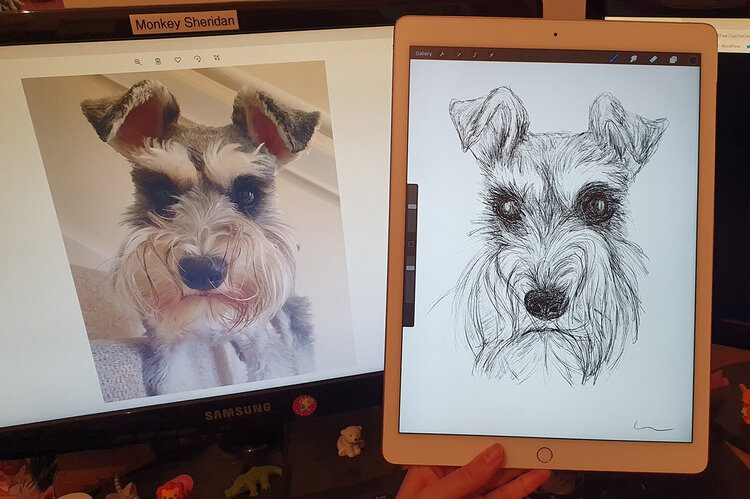
As long as you’re getting through the day, you’re doing great.
Some days, I’ve got loads of work done, read a few chapters of a book and made a brand-new recipe for dinner. Other days, I haven’t showered, I’ve had a Pot Noodle for lunch, and I’ve found myself crying on the kitchen floor.
Both of these types of day are fine.
Check in with your loved ones when you can, but remember that just because someone hasn’t contacted you, it doesn’t mean that they don’t care. Stuff is just pretty weird right now, and we’re all doing our best.
Stay safe, wash your hands, and try not to lick anybody.
We’ll get through this!
Own your weaknesses and strengthen your brand
Understandably, many companies don’t like to be seen as being weak. They fear that this makes them appear less capable or professional, and less appealing to consumers. While this can be true, so can the opposite—if done well! We’ve previously talked about turning negatives into positives, now Claire Baldwin discusses how owning your weaknesses can help you to develop a brand identity that people trust, appreciate and relate to.
By humans, for humans
One of the most important things for consumers is being able to relate to a brand. Your customers are human, and they love to know that you are human, too.
Showing off and flaunting your greatness isn’t always the best way to draw people in. Humans feel more comfortable around others who we perceive to be similar to ourselves. We may shy away from big corporations that alienate us or high-end brands that make us feel inferior.
While common sense leads us to believe that a mistake or weakness will cause a company to lose face and therefore also lose customers, people can actually be quite forgiving. We are empathetic creatures, and seeing someone else do something stupid and laughing about it together can strengthen the company-consumer bond.
Humans make mistakes, but humans are also caring, friendly, and just trying to do their best. If your brand embodies these qualities, you can build empathy and brand loyalty while minimising any damage to your image.
Admitting weakness is a sign of integrity
Admitting flaws makes a person (or brand) more likeable and shows honesty and integrity.
If there’s something about your company, product or service that’s less than ideal, trying to gloss over it will just lead to disappointment and frustration when that detail comes to light.
Consumers appreciate being given the facts clearly and up front. A 2018 study found that, beyond price and quality, the two top factors that attract people to buy from certain brands are delivering on promises and being transparent.
Being upfront minimises the risk of disappointment. Even if your prices are high or your delivery is slow, giving people realistic expectations builds trust and leads to better satisfaction. It’s better to under-promise and over-deliver than to keep up appearances and let your customers down.
Embracing emotion in business
While B2C brands may find it easier to appeal to the emotional side of their consumers than B2B brands, there’s definitely a time and a place for weakness when selling to other businesses.
Focusing on logic and rationality may provide a solid foundation for your pitch, but it’s only going to tell your customers what you do, not who you are. The decision-makers behind your B2B deals are human after all, and people buy from people.
It’s important not to overdo it, but resonating with B2B audiences on an emotional level can help you to develop a long-term advantage over your competitors. By injecting a little human element into the business deal, you can present a brand that is caring, honest and worth investing in.
Looking to develop your brand identity?
We know what makes people tick, and it’s our job to help you to consider your brand and how it appeals to your target audience.
Come and chat to us about your brand and let’s create an emotional connection that truly resonates with consumers.
Proud to be a Climate Positive Workforce
Protecting the environment and fighting climate change is more important than it’s ever been, and DWH are proud to support Offset Earth by becoming a Climate Positive Workforce.
Trying to minimise our impact on the environment is important to us here at DWH, and we were delighted when we learned about Offset Earth’s Climate Positive Workforce project.
By donating just a few pounds per employee per month, we are able to reduce net carbon emissions and provide essential support to fight climate change around the world.
What does Offset Earth do?
Offset Earth helps individuals and companies to offset their carbon footprint while also supporting global environmental causes.
For businesses, they calculate the carbon footprint of the entire lives of a company’s employees, add the carbon emissions created by business travel, and offset this by funding leading climate change solutions.
DWH is currently one of almost 500 businesses that is making an impact by becoming a Climate Positive Workforce.
If you’d like to join us or find out more about this amazing project, visit Offset Earth’s business page. To sign up as an individual or family—including pets!—select your plan here.
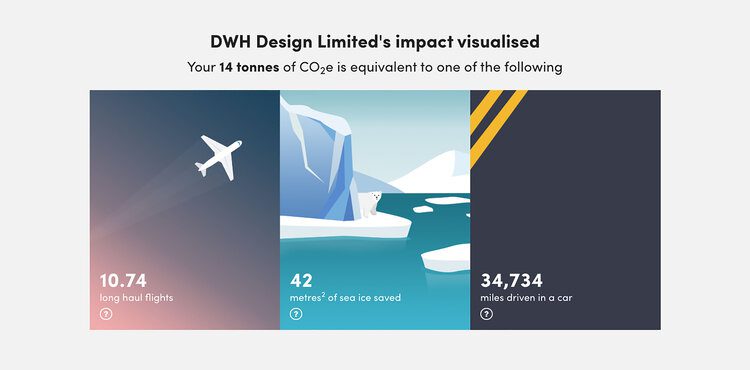
Explore DWH’s forest
Take a look at DWH’s Offset Earth profile to see our stats and explore our forest. You can see what trees have been planted, where, and what projects they have supported.
At the time of writing, we’ve been a Climate Positive Workforce for 4 months with 309 trees in our forest. This means that we’ve offset 14 tonnes of CO2e!
All of our trees are mangroves that have been planted as part of Offset Earth’s Reforest Madagascar project. While the island has over 200,000 species of plants and animals that don’t exist anywhere else in the world, more than 90% of Madagascar’s original forests have been destroyed, endangering the local wildlife.
Our funds support non-profit Eden Reforestation Projects as they continue to return trees to Madagascar. Eden are world leaders in responsible reforestation, having already planted 265 million trees and created 2.6 million work days for local communities.
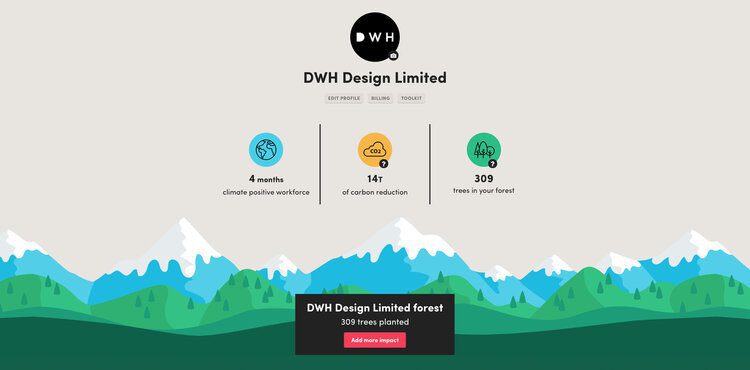
Why is reforestation important?
Reforestation is one of the most beneficial ways to combat climate change and help the environment. Not only does it provide essential habitats for native wildlife, it also contributes to carbon absorption and allows the local people to farm and live on the land.
Mangrove trees capture up to four times as much carbon per acre than tropical rainforests, and their root systems provide nurseries and shelter for tropical fish, making them a perfect choice for reforestation. They are also indigenous to Madagascar, meaning that the natural habitat is being restored.
Offset Earth has its own designated land to the north-west of Madagascar, near Marataola. They will plant their first two million mangroves here, before moving along the coast as contributions grow.
Check out some of the other amazing projects that are supported by Offset Earth, such as converting waste rice husks into power and developing wind farms.
Why is nostalgia marketing so powerful?
Nostalgia marketing has become particularly prevalent of late, suggesting that it’s a powerful marketing tool. Claire Baldwin looks at what makes it so successful.
Nostalgia is a great sales strategy in just about any industry.
Fairy Liquid brought back their original green-and-white bottles in 2010 to celebrate their 50th anniversary; in 2017, Nokia released a new version of the 3310, a cultural touchstone that defined a generation; and the Star Wars franchise continues to build on childhood nostalgia to sell everything from fruit to waffle makers.
However, one area that we often see a return to retro packaging designs is that of snacks and confectionery.
Sweet memories
Starburst has just launched a limited edition using their former name of Opal Fruits with Mike Foster and his team at Straight Forward Design.
To do this, they returned to the original packaging design—or, at least, they tried too. Unfortunately, nobody thought to save the original artwork before the Starburst rebrand, and it became lost.
This gave the design team a fascinating challenge, in which they essentially had to recreate the packaging from memory. This demonstrated exactly how memorable certain brands can be, and which elements of their design resonate most with people.
Starburst is just the latest product to harness the power of snack nostalgia to boost sales. In 2008, Monster Munch made a return to their original packaging and larger size of claw-shaped corn snacks; Snickers temporarily returned to their former name of Marathon at the end of 2019, 30 years after the original rebrand; and Cadbury is set to bring back Old Jamaica chocolate bars after 10 years off the shelves.
Why do people love nostalgia?
Nostalgia is an inherently pleasant experience. When we talk of nostalgia, it’s about the good old times. Anything that brings that feeling of warmth and security and happiness back to you naturally recreates that same feeling, and that’s what brands are looking for.
As adults, we often find ourselves overwhelmed by the stress and mundanities of our everyday lives. We might think back to simpler times when these things didn’t matter, the world was a smaller place at a slower pace. Many of us are guilty of saying that things were better “back in my day” and brands are intrinsic to this.
Brands in the background
You may be surprised by how prevalent brands are in important moments in our life. The TV shows we watched, the food we ate, the clothes we wore, the music we listened to; these are all baked into the background of our experiences.
The ability of brands to connect with their customers on a personal level is important, and our nostalgia demonstrates those that were successful in doing so. Getting hold of something that brings back memories of happier days can be exciting, especially when the retro version is a limited edition.
This makes former customers of certain products reach into their wallets for that warm and fuzzy feeling. The fleeting experience of revisiting days gone by might therefore create loyal customers out of people who have forgotten or become disenchanted by the brand.
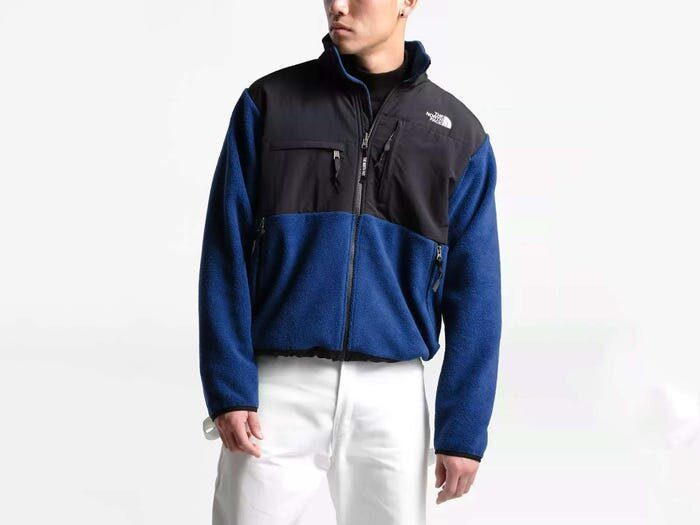
Fauxstalgia
Along with returning to vintage brands and products, a new phenomenon of ‘fauxstalgia’ has emerged. This is when new designs are created with a retro feel to tap into feelings of nostalgia, or to create a nostalgic feeling for a particular cultural movement that a person didn’t actually experience.
While people may not have any meaningful connection with the brand, harnessing particular colours, fonts, design elements, sounds and materials can help to develop a pseudo-nostalgia and a sense of familiarity. It also creates the impression that a company or product embodies the warm, friendly and reliable feelings associated with nostalgia.
Creative solutions for brands both old and new
DWH are experts in developing brand identities for businesses of all types and sizes.
Whether you’re an existing brand looking to reposition yourself within the market, or a new company looking to establish a particular look and feel, have a chat with us and we’ll help you to develop your ideas into something that resonates with your market.
What do the 20's hold for the creative industry
Now we’ve entered a new decade, what’s next for the creative industry? The teens saw almost endless innovation and exciting developments, but there’s plenty still to come. Claire Baldwin takes a look at what we can expect from the creative industry in 2020 and beyond.
It’s the dawn of a new decade, which means saying goodbye to the old and hello to the new.
Let’s look at the upcoming design trends of the ’20s and what they could mean for the industry as a whole.
Equality and diversity
Companies have already been making more of an effort towards realistic representation of age, gender, race and other identifying characteristics, but there is still more work to be done here.
In particular, gender neutrality will be a main area of focus in terms of visual design and product design. The idea of ‘masculine’ or ‘feminine’ design is being faded out, and companies are moving away from creating separate product designs or colours for males and females. We’ll see more gender-neutral and non-binary character design, and more emphasis on who people are instead of what they are.
Simplicity in illustration and animation
While 3D technology is the best it’s ever been, and more and more companies are harnessing the power of virtual reality, 2D design seems to be making a resurgence.
We’ve seen this already with the 2020 Oscar Animated Feature Film nominations, with 3D giants The Lion King and Frozen 2 nowhere to be seen. Instead, traditionally animated films Klaus and I Lost My Body have hit the shortlist and, while other 3D films have been nominated, this shows a shift towards renewed appreciation for 2D design.
Simple line art, minimalist drawings and geometric designs put the emphasis on the message rather than the art. This simplifies communication between company and consumer, and makes advertising easier to digest in a fast-paced digital world where brands are vying for attention.

Sustainability
Sustainability is a hugely important movement, and a great way to increase brand image and loyalty. It’s not just manufacturing that can benefit from a sustainable approach, either. By considering every step of your company’s processes, you can minimise your negative impact on the environment, such as using green hosting, renewable energy, and recycled materials.
One great example of sustainability in design is the Tokyo 2020 Olympic medals, which have been made from discarded electronics. This is an inspiring combination of tradition and modern ethical design, presenting a caring, approachable image that resonates with an audience.
Focus on typography
Font-heavy designs are on the rise, with obnoxiously large text taking centre stage in designs for everything from websites to magazines.
Bold, interesting and unusual typography has started to find its place in a digital world, creating easily legible messages on tiny mobile devices. This allows brands to make clear, bold statements and to state their message rather than relying on product shots or ambiguous imagery.
Variable fonts are also set to make an impact in 2020, with designers able to specify different weights and versions of the same font, creating a unified brand identity while allowing for flexibility within the design.

Targeting Gen Alpha
While millennials and Gen Z have been at the forefront of marketing campaigns in the last decade, it’s time to focus on Gen Alpha. Those born during the 2010s will start to become important targets for marketing, due to their influence within the family and their growing spending power.
Still at a young and inquisitive age, Gen Alpha kids are ready to be impressed—but don’t think you can fool them with flashy brands and big talk. This generation is tech savvy, computer literate and well educated about environmental issues. They’ll respond well to genuine compassion and concern about the world we live in, and being treated like individuals instead of sales statistics.
Your 2020 digital creative team
If you’re looking to jump into the ’20s with a strong brand identity and innovative marketing strategy, get in touch with DWH and we’ll help you to make your mark.


